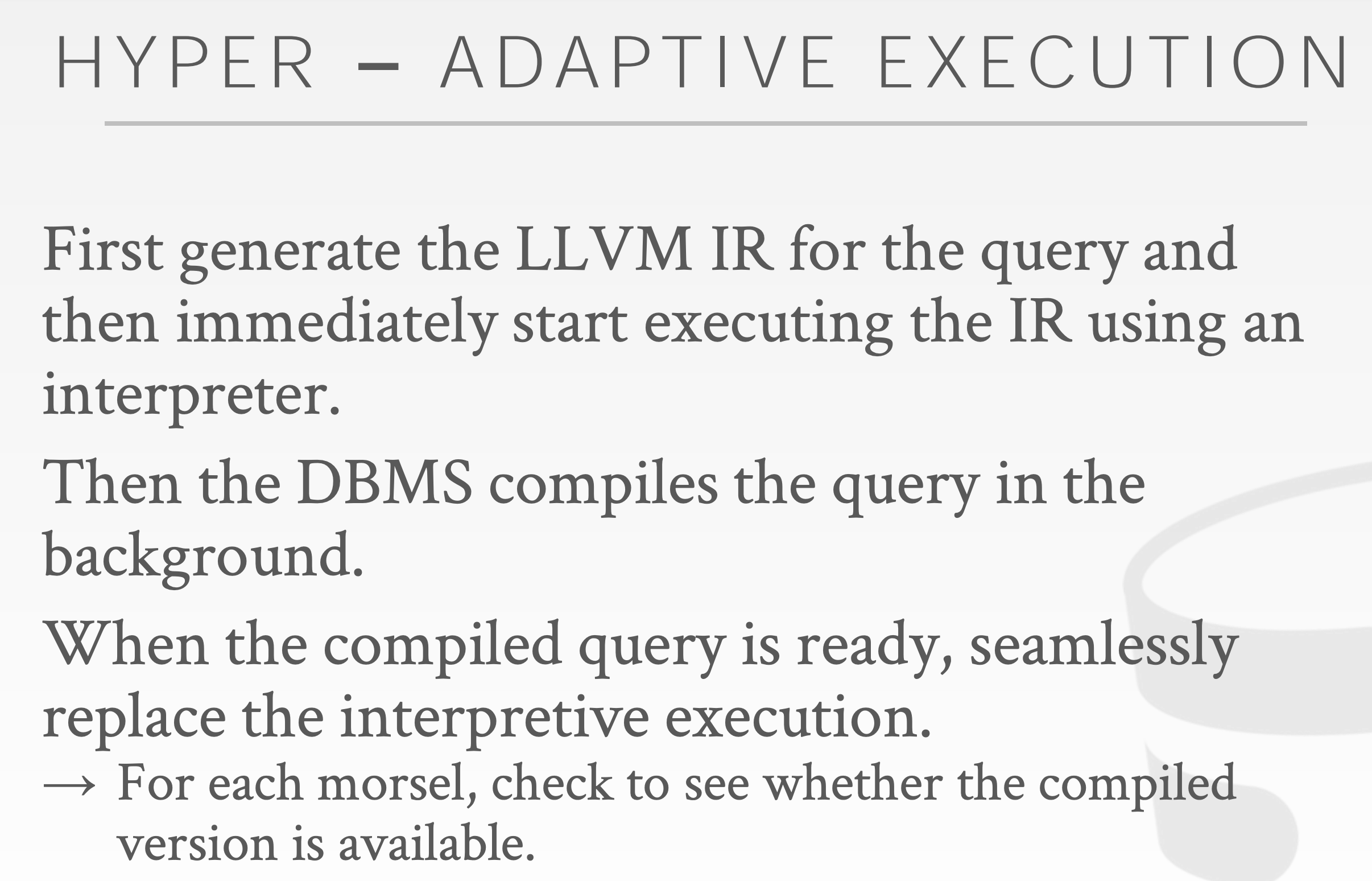Background
After switching to an in-memory DBMS, the only way to increase throughput is to reduce the number of instructions executed. One way to achieve such a reudction in instructions is through code specialization, that any CPU intensive entity of database can be natively compiled if they have a similar execution pattern on different inputs:
- Access Methods
- Stored Procedures
- Operator Execution
- Predicate Evaludation
- Logging Operations
Benefits
Attribute types are known a priori: data access function calls can be converted to inline pointer casting. Predicates are known a priori: they can be evaludated using primitive data comparisons. No function calls in loops: allows the compiler to efficiently distribute data to registers and increase cache reuse.
Code Generation
- Transpilation: write code that converts a relational query plan into imperative language source code and then run it through a conventional compiler to generate native code.
- JIT compilation: generate an intermediate representation (IR) of the query that the DBMS then compiles into native code.

The generated query code can invoke any other function in the DBMS.
Compilation Cost
LLVM’s compilation time grows super-linearly relative to the query size: # of joins, # of predicates, # of aggregations. A major problem with OLAP workloads.
So we have adaptive execution:

Memsql
A query plan is converted into an imperative plan expressed in a high-level imperative DSL.
- MemSQL Programming Language (MPL)
- Think of this as a C++ dialect.
The DSL then gets converted into a second language of opcodes.
- MemSQL Bit Code (MBC)
- Think of this as JVM byte code.
Finally the DBMS compiles the opcodes into LLVM IR and then to native code.
